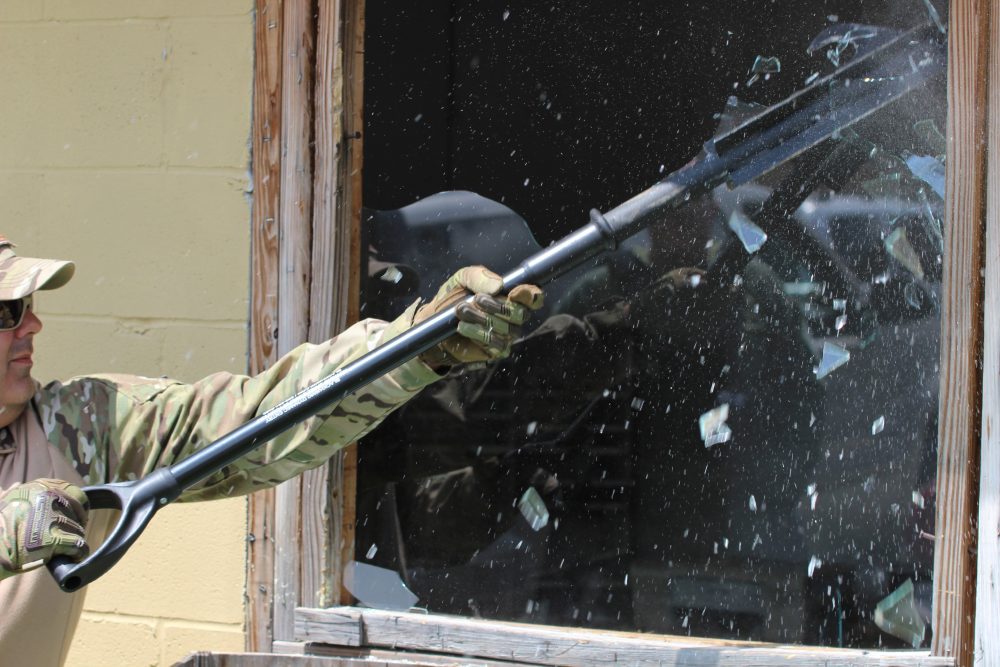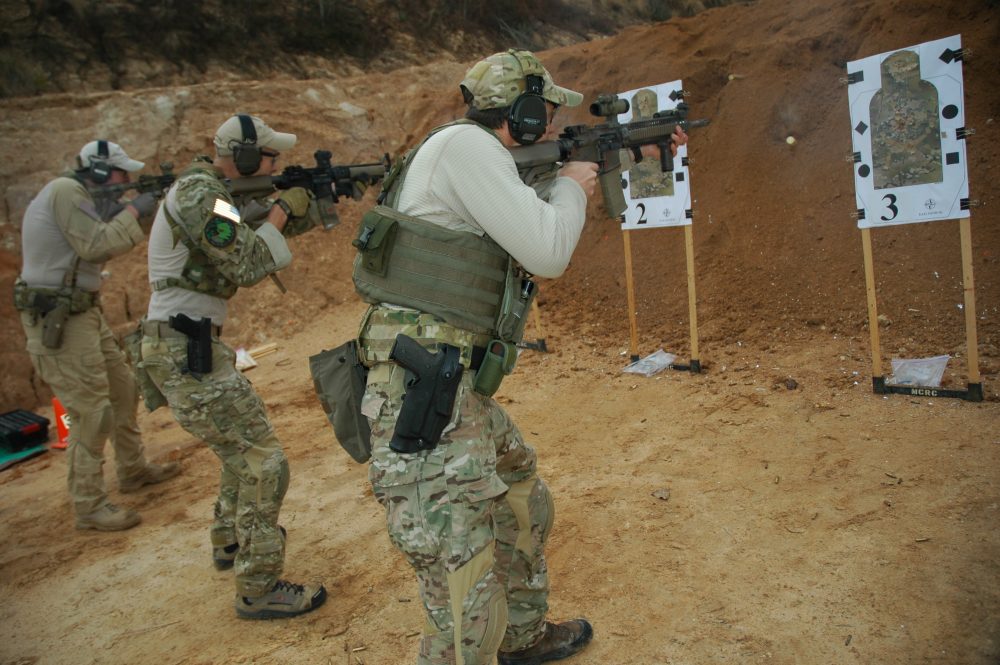The textbook is not a Bible—it’s a guide.
And the reason people pray to a higher being as soon as a gunfight erupts is not because the military manual suggests this strategy. It’s because the textbook always seems to omit the fact that Murphy’s Law manifests itself one nanosecond after the fun starts.
Ergo, the combatant has only two options: pray to a deity to keep his buttocks intact for the duration of the conflict, and/or employ Plan B, because Plan A invariably flies out the window simultaneously with the sonic boom of the first round fired—every time, almost on cue, without fail.
So maybe it’s time to add something extra to the traditional manual of arms—like, for example, a chapter explaining to the soon-to-be-combatant that the textbook is predominantly a guide as to what should happen in the forthcoming fight. It is not a 100% Biblical guaranteed prognostication of what necessarily will occur.
Unlike the great works on strategy and tactics, like Sun Tzu’s Art of War and Miyamoto Musashi’s Book of Five Rings, the manuals on mechanical firearms operation lack The Missing Chapter. Or, to be more accurate, don’t quite seem to differentiate between range theory and battlefield practice.
The difference, however, is that we read the writings of the Musashis, Sun Tzu, and von Moltkes, but don’t practice what they preach. The wisdom is laid out in print—we just don’t execute what we have been taught. But when it comes down to the actuality of what we physically do in a fight, the textbook’s Missing Chapter rears its ugly head. Let’s face facts: frontline operators may not utilize a lot of the same mechanical techniques in a deadly force fight as they do on the range.
Then why do we persist in perpetuating the practice of range techniques that are not only rarely viable in a life-and-death contact, but also proven by repeated analysis to border on virtually never employed for real?
The answer is probably multi-faceted, but usually based on the peer pressure syndrome. In other words, if the firearms instructor says that’s the way it’s done, nobody speaks up if they have a question because either they “don’t want to look like a fool” or are told “because that’s the way we do it here” with no explanation or clarification.
Well, thank you so much, O Great Omniscient One, for cutting me down when I was simply asking a civil, possibly life-saving question. You know, for next week when I’m going to be frontline cannon fodder, while you’re driving on the interstate in an air-conditioned car en route to your next “do it my way” training class.
The other primary facet in the last decade is the “I saw it on the Internet so it has to be true” debacle. Here’s a little gem of information that actually is true: any idiot with one digit on his paw can put whatever he wants to on the Internet. All it takes to make him look like Einstein is a couple of bigger idiots who take what he says at face value.
You have a brain—use it. It’s your life, or what’s left of it. There are idiots, savants and idiot savants. Two of these three are good, but the third will get you killed in a gunfight. Which do you choose to be?
The Missing Chapter will probably be written only when some heretic has the intestinal fortitude to lay waste all the “earth-is-flat” myths, because it takes forever to change the status quo of those who don’t (or won’t) think for themselves. And a gun battle is a helluva place to start on-the-job training, even though one does, admittedly, learn primarily from the School of Hard Knocks. But the instructors and boot-camp academics are duty and honor bound to feed the rookie as best a running start as humanly possible—period. And we simply are not doing enough, by both omitting information and perpetuating fallacies, be it intentional or because of ignorance.
So what—in this author’s crazed opinion—is missing from the 21st century training manual?
Herewith, some “How Abouts?”
How about not telling people that they have to shoot a pistol with both eyes open “so you can maintain visual track of your peripheral surroundings while you’re delivering rounds downrange.” No. You have only six degrees of peripheral vision under these circumstances, unless you’ve trained since infancy with tri-lateral visual techniques. And it’s not something you can “train in” in a couple of months. Not if you’ve been raised as a Western urbanite it isn’t. So shoot your hawgleg with one or both eyes—it isn’t going to affect your momentary battle peripheral acuity one iota.
Along with this goes the “you have to use your master eye” spiel. Says who? Monkey see, monkey do. One wonders how many people have actually tried using their non-dominant eye purely and solely because they’ve been told in advance that it won’t work. There’s a difference between optical focal ability and eye dominance.
How about not telling people to “hold the trigger to the rear after primer ignition and then ease it forward until you feel the sears reset.” You’re not taking a single precision distance shot at Camp Perry, and you’re not a military sniper delivering a single 800-meter kill round. You’re in a down-and-dirty, ten-foot, multiple-round handgun fight, and there ain’t going to be any “hold to the rear and feel for sear reset” finesse going on.
How about not telling people to watch the target and not the weapon when you’re reloading. If you’re reloading, your life hasn’t been going too smoothly in the past couple of seconds, and everybody—except a magazine-tube-fed shotgunner—glances momentarily at the point of magazine/magazine well contact when their feet are moving over uneven terrain. A monkey can load eyes-off when his feet are stationary, but gunfights get your feet moving like nothing else—it’s called self-preservation.
How many “How Abouts” are there? Enough to warrant the Missing Chapter, that’s for sure. The point is to think for yourself and utilize the same mechanical techniques when training as you would in battle.
The textbook will never be a Bible but, for better or worse, the Bible has already been completed in its entirety. The textbook has not…
Louis Awerbuck is Director of the internationally acclaimed Yavapai Firearms Academy. Course information and schedules are available at their website at www.yfainc.com.





